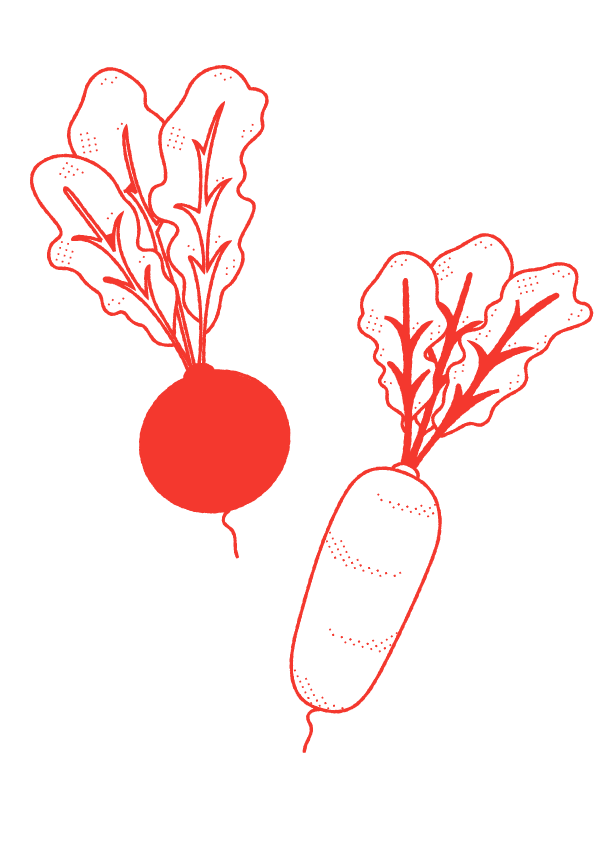Cauliflower
Cauliflower is a fantastic vegetable to cook with because its delicate flavour is a great base for many culinary creations. It easily replaces rice and pizza bases as a low-carb alternative, adds creaminess to a soup and is a popular vegan substitute for chicken dishes. With a little creativity cauliflower transforms into something far from boring.
History
The name cauliflower is taken from the Italian cavolo fiore which translates to cabbage flower. However, even though both cauliflower and cabbage are part of the same Brassica family, they are not the same plant. Cauliflower is not the flower of a cabbage plant but they do have similar origins.
Cauliflower is thought to have originated in the Middle East and Mediterranean. It is a highly modified version of the original wild cabbage, as many vegetables such as broccoli are. There, it was considered a delicacy with its first recordings in the 12th century. It was still considered a delicacy to Europeans by the time it made its way to the table of King Louis IV in the 16th century.
The large globe of white florets did not make it to the British isles until much later, in the 17th century. When it did, new strains were developed specific to British regions. There is the Northerns’ type which was first noted in Yorkshire and Derbyshire and the Cornish cauliflower from Cornwall. It was a welcome crop for these colder regions since it handles the winter weather conditions well.
Season & Cultivation
Thanks to the moderate climate of the UK, it is possible to grow cauliflower year round. However, it is also considered a somewhat sensitive vegetable since it does not deal well with big temperature changes. Also, they are not resistant to frost nor summer heat.
Knowing this, it is best to avoid the harvest that is available during the winter months of December to February because that batch was probably grown in greenhouses. The autumn harvest is your best bet if you are trying to minimize your ecological footprint. The cauliflower that is on the market from September to November was most likely sowed in early spring which reduces the need for protected growing.
There is also a winter variety, though. This cauliflower has a much longer growing season. The farmers will have started sowing around May and waited to cut until the next spring. Thus, cauliflower that you find from March to May are likely grown by very patient and careful farmers.
Buying Advice
As I mentioned, you are most likely to find cauliflower grown with the smallest ecological footprint during early spring and autumn. However, there are several cauliflower varieties and each with their own growing season. So, don’t be shy to ask the market seller what type of farm they get their cauliflower from.
The best cauliflower has large crisp white florets and bright green leaves. Those that have been overexposed to sun tend to develop a more yellow colour or even dark spots. This does not mean that the cauliflower has gone bad, though. In fact, it suggests that it has been grown outside. However, it does tend to be softer than those with a purely white head.
You can tell how fresh a cauliflower is by looking at its base. This is supposed to be the lightest part of the plant. If the base has started to darken then that head has probably been out for a while. The lighter the base, the fresher the cauliflower.
Cooking Advice
The possibilities of cooking with cauliflower are literally endless. More and more clever and creative cauliflower recipes are popping up every day.
Cauliflower stores well inside a fridge but the stems and florets will grow soft the longer it sits there. This plant can also be stored in the freezer but even in those cold temperatures it will start to soften after a few days.
To properly cut a cauliflower, start by removing the leaves. The leaves are not so flavourful as part of a meal but they are a great addition to a vegetable stock. Alternatively, add them to your compost.
Then, start cutting off the florets, one at a time. If you are lucky to have bought a specimen with particularly large florets, cut the florets in half or even smaller. For most dishes you will want the cauliflower to cook evenly and for that you need equal sized pieces.
Cutting cauliflower into small pieces is not the only option, though. Now, it is quite popular to slice the head into large slabs so that it can be grilled or roasted. This is the type of cut used for cauliflower ‘steak’. The white colour is a wonderful canvas for char and grill marks.
This vegetable is also a great way to thicken a soup without adding cream. Simply cut it into chunks and boil for about 8 minutes before creating a mash. Use a hand blender to get the smoothest consistency. Alternatively, use a potato masher and make a cauliflower mash to replace the traditional potato mash.
Besides potatoes, cauliflower is also a great healthy alternative to many other starchy foods such as rice or even a pizza base. Cauliflower rice is easier to prepare than you think. All you have to do is pulse it into a rice like consistency in a food processor, no boiling needed. For the best flavour profile, stir fry it with lots of aromatics and Asian sauces for low carb alternative to take out fried rice.
Cauliflower pizza crust is more complicated. There are many steps and it might take a few trial and error batches to get the right consistency. Thankfully, many health food stores now sell it by the bag. I won’t tell your friends you made things easier for yourself ;)



